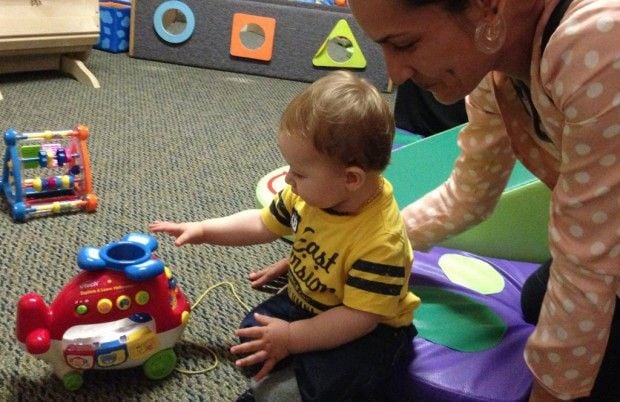Tucson’s poverty problem has improved in recent years, U.S. census numbers show, but some fear the slow climb could end — or reverse — once Arizona starts enforcing its strictest-in-the-nation welfare laws.
Arizona families eligible for cash assistance through Temporary Assistance for Needy Families, or TANF, will have one year of help rather than two as of July 1, 2016. Those who have already been receiving services for 12 months or more will be cut off, including about 1,600 Arizona families and 2,700 children. This includes 300 families and 460 children living in Pima County.
Angie Carrasco prays she has a job by then.
A single mother of a toddler, Carrasco was finishing up her bachelor’s degree in Spanish translation at the University of Arizona in 2011 when she became the victim of a random, violent crime. A head injury left her with amnesia, and it has taken time for her memory to improve enough to return to school.
This time she’s studying to be a phlebotomist through Pima Community College, and will start an internship in the spring.
“I hope I have a job by then because right now I just barely get by with some assistance,” she said. “I’m very blessed, but I’m also in a difficult situation.”
This is the first time she’s used public assistance, she said, and she’s grateful it’s there.
“My long-term goal is getting a really good, long-term job,” said Carrasco, 34.
In addition to saving Arizona about $3.9 million per year, the change is also to motivate people to get off welfare and into jobs, said Daniel Scarpinato, spokesman for Gov. Doug Ducey.
“The governor’s view is that we should be measuring the success of how we’re helping those who need help the most not by how many are on state assistance, but by how many are transitioning into jobs and more successful situations,” he said.
Tucson is now the nation’s eighth-poorest metropolitan-sized city, 2013 census data shows. The city, with about 500,000 residents, ranked sixth in 2011.
“There’s no question that whenever there’s less funding from the state, cities and towns are left to cope as best they can,” said Tucson Mayor Jonathan Rothschild.
Cutting off families in need after one year does not allow them enough time to become self-sufficient, Rothschild said.
“It takes more than a year to recover from the health problem or to reorganize the debt,” he said. “It just gives those women and men one less resource that they can turn to, one less thread in the safety net.”
Terri Patt-Smith, social services director for Interfaith Community Services, agrees that most people need more than a year to climb out of a crisis, addiction or job loss. She fears Tucson will see more homeless families once the change takes hold.
“The majority of the people we are seeing are unemployed or underemployed or have had a crisis in their life,” she said. “I imagine we’ll be seeing a lot more people now.”
Scarpinato said Arizona’s Department of Economic Security will boost its efforts to help people find jobs, but agreed there is “still a lot that needs to be done” to increase employment.
Special emphasis will be placed on TANF recipients who are within six months of exiting the program, said Tasya Peterson, the DES spokeswoman.
We will “require the selected vendors to work closely with these clients to help them achieve employment before their benefit period ends,” she said.
As of September, the average amount a family was receiving per month was $201.13, depending on the number of people in the family and the amount of other income in the family, DES records show.
TANF support used to last five years but was cut to 24 months during the recession that started in 2008.
“It’s hard to imagine a reason for this policy, that it’s not a matter of seeing poor families as a very low priority or not a priority at all,” said Dana Wolfe Naimark, president of the Children’s Action Alliance.
TANF is primarily to help children, she said, and the pending cuts will hurt them — especially on the heels of cuts to school funding, housing and child care resources.
“The more we unravel the safety net, the more we can expect reports of child neglect to grow,” she said. “Whatever this was designed to do, it is not about improving conditions for children and their families.”
Naimark said while it is impossible to predict the outcome, his agency anticipates a surge in child neglect cases.
“There’s a clear link, in the big picture, between poverty and neglect,” she said. “We can’t say there’s a one for one, but are we concerned? Absolutely.”
The 2013 Arizona Daily Star series on poverty, “Losing Ground,” examined the reasons behind Tucson’s high poverty rate. One finding was that Arizona shrunk its candidacy pool for cash assistance by narrowing the requirements to receive help. This occurred during the recession, with Arizona’s rolls dropping by half since mid-2010.
The changes affected the poorest of the poor and the most vulnerable, primarily single mothers with young children.





